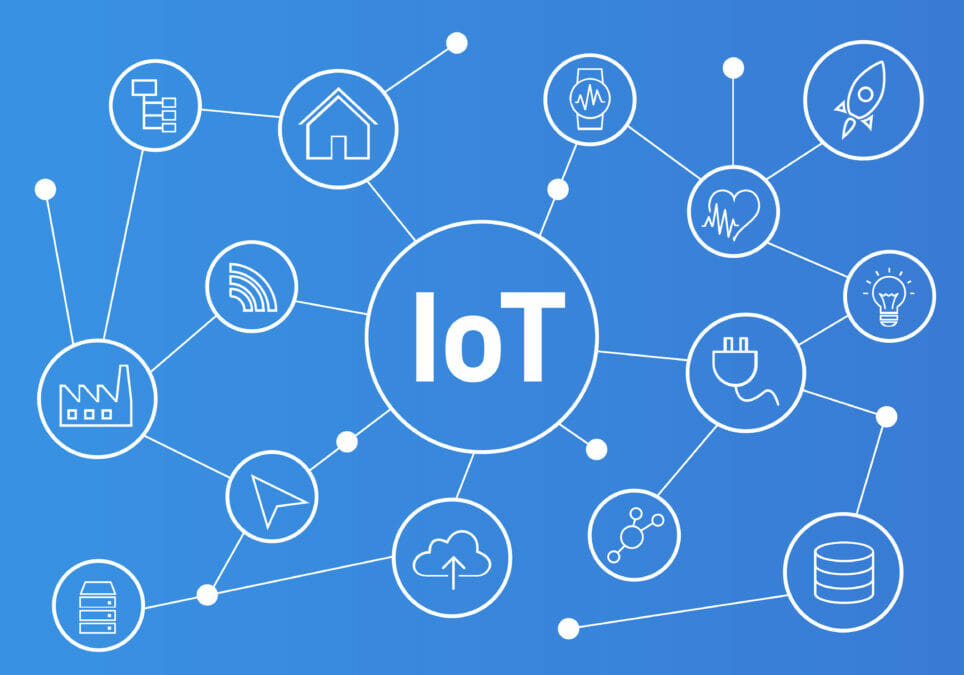The arrival of Covid-19 presented considerable disruption and challenge for IT leaders, which necessitated a complete rethink of IT priorities within the enterprise. The unprecedented move to engage sizeable remote workforces dramatically accelerated the adoption of IoT devices to enable seamless workforce connectivity, access and collaboration and also cloud adoption, to house mission-critical commercial applications. This, in turn, has driven an explosion in data from external sources, with associated concerns around connectivity, access, security and network latency, and ultimately, the delivery of the digitally connected enterprise. So, the need to rapidly scale IoT to meet this new technology environment and adapted enterprise requirements has now become more critical than ever.
And, as we look to the future, the IoT posture within the enterprise has changed dramatically, and will remain a priority concern for CIOs as we continue to adapt to the new ‘technology normal’.
Designing and building IoT at scale and balancing the use of edge and cloud computing is now mission-critical in delivering on IoT’s commercial promise, as organisations aim to balance ubiquitous connectivity against bandwidth, network security and latency issues. The priority now lies in ensuring enhanced access to information so that businesses can become more agile, with scalable IoT solutions that enable better and faster decision-making, that ultimately drives competitive advantage.
IoT, edge and cloud are inextricably linked
IoT has without a doubt become one of the most important components of IT infrastructure and the five pillars of IoT infrastructure: IoT platforms; access technologies; data storage and processing; data analytics; and security, are transforming business for the digital age.
The rise of smart, connected IoT devices and ubiquitous connectivity is transforming enterprise technology infrastructure into cost-efficient, highly responsive and agile environments, with real-time automated digital processes with integrated edge and cloud architectures that provide almost unimpeded connectivity and speed.
Within this, edge is becoming a fundamental part of the puzzle for enterprises in balancing the exponential growth in data against enterprise bandwidth, enabling data normalisation, filtering and prioritisation and subsequent improvements to network security, with certificates and tokens of devices stored locally. Gateways and edge servers are also enabling simpler, cheaper IoT devices, as data storage and processing are transferred to the gateway or edge server. Supporting this, cloud offers copious benefits in delivering on-demand scalability and storage and is readily configurable, automated, and resilient.
It’s not about cloud vs edge, it’s about connections
The global benefits of IoT innovation and development
Today, IoT is a truly foundational part of the IT infrastructure, supporting innovation and development across multiple industry sectors, enabling new business models and offerings for a better future.
For example, look at the potential of IoT in the connected supply chain. Estimates project that 1.6 billion tons of food, worth about $1.2 trillion, is currently lost and going to waste each year, with half due to loss, damage, theft or spoiling (the rest is overproduction). Much could be eliminated through a continuously connected supply chain, with real time data tracking and cellular-enabled ‘smart’ labels managing every stage of food supply, from farm to table.
Another example is Alcuris. Thanks to IoT, this company is delivering the highest possible connectivity uptime for its Memo Connected Care Suite assistive remote patient management (RPM) technology, which is advancing the bridge between primary health care and a home monitoring service, enabling older and more vulnerable patients to live their lives with more independence.
Cash strapped councils must embrace tech-enabled social care solutions
Revolutionising business and operational models
The use cases for IoT go well beyond supply chain innovation and telemedicine. In fact, seamless connectivity promises to revolutionise every aspect of business and lifestyle. IoT can increase productivity, connect remote workforces and support ways to collaborate digitally. It can reduce commercial costs and mitigate physical security risks through the continual monitoring that it permits, provide better control of commercial facilities and operations across multiple industries, drive innovation and new business models and enable businesses to conserve mission-critical resources.
The digitally connected enterprise is here to stay and the move towards ubiquitous connectivity is now critical. Where IoT has enabled a quantum leap in innovation for enterprises with far reaching financial, technological and cultural benefits; it is now down to IT leaders to maximise the next phase of progress, delivering truly ubiquitous connectivity and IoT 2.0 in order to enable true business transformation.











